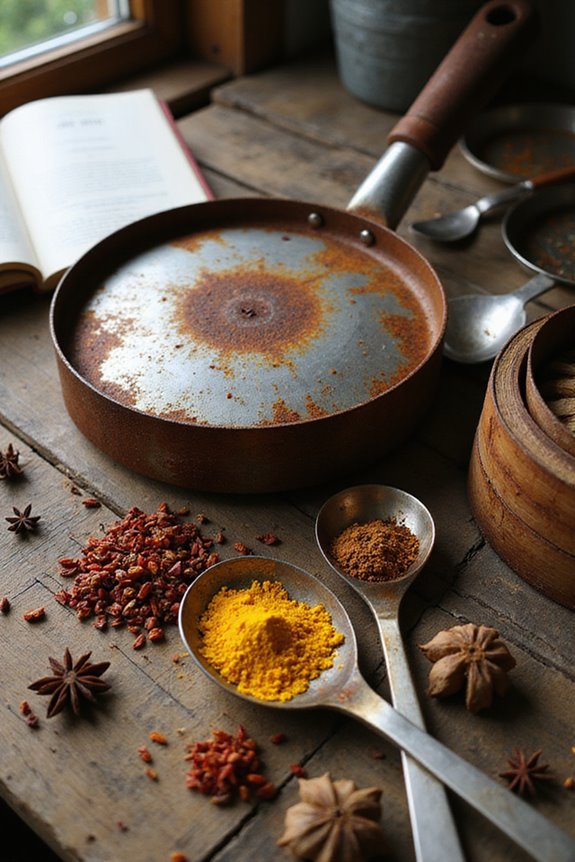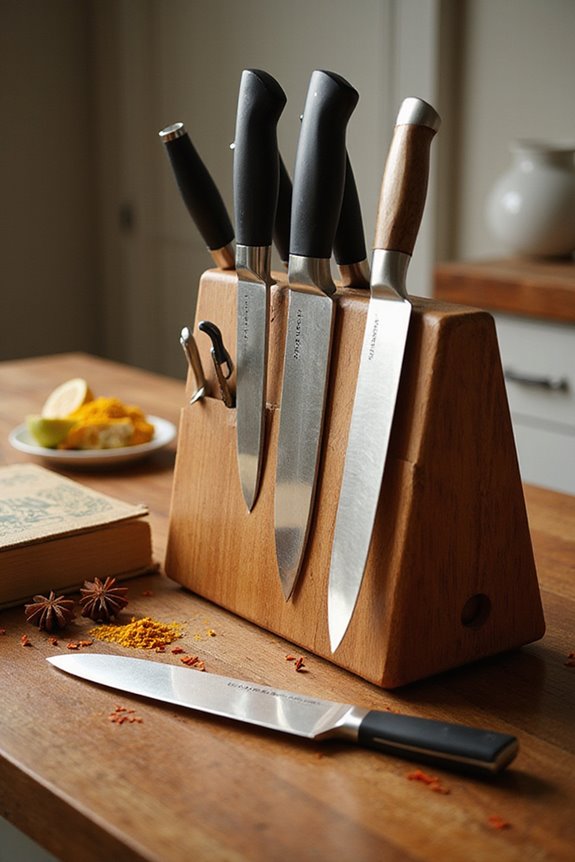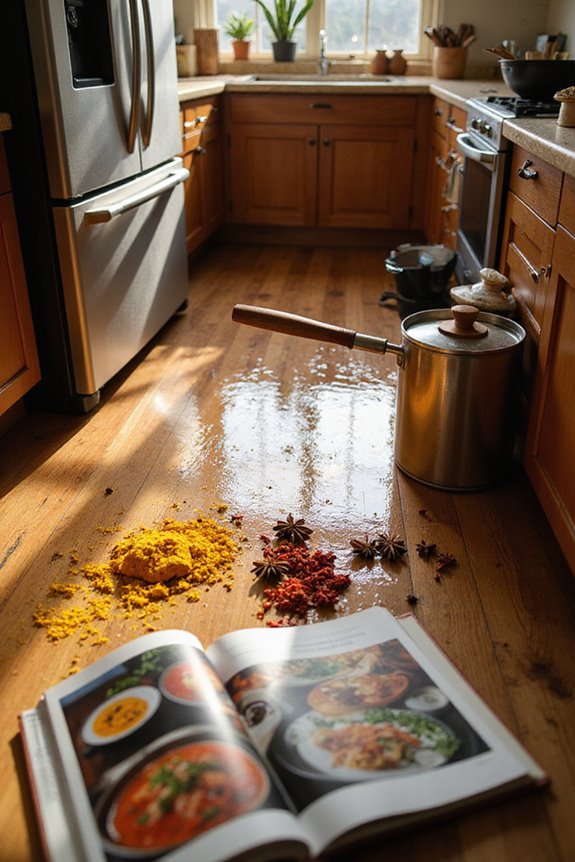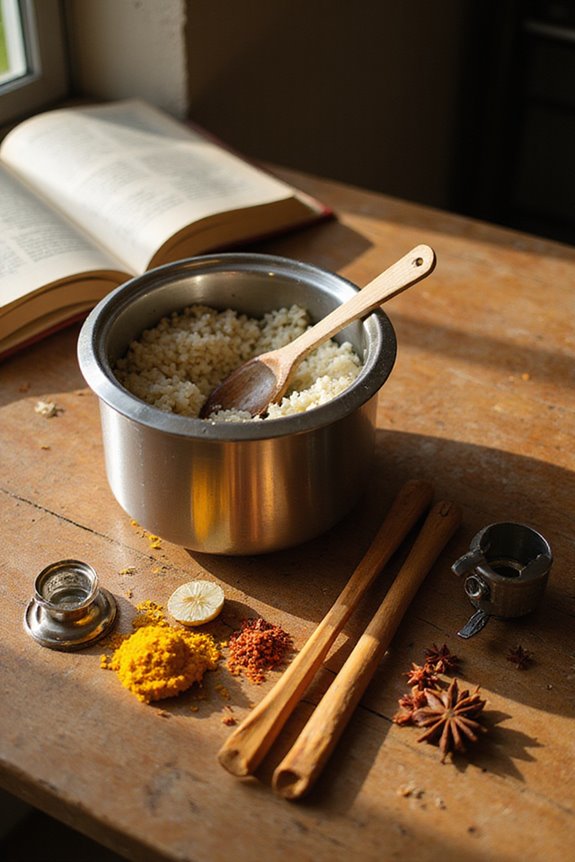If our equipment’s rusting, it’s likely due to moisture and oxygen causing those tricky chemical reactions. Don’t let rust spoil our delightful tools! Here’s the scoop:
- Humidity and Weather: High humidity or salty breezes can speed up rust.
- Proper Storage: Keep gear dry and elevated, away from standing water.
Let’s embrace protective coatings to guard against rust like wrapping gifts! For more magical tips on maintenance and rust removal, stick around—there’s plenty more to explore!
Key Takeaways
- Rust forms when iron reacts with oxygen and moisture, leading to oxidation and eventual deterioration of your equipment.
- High humidity and coastal conditions can accelerate rusting by increasing moisture exposure to metal surfaces.
- Improper storage practices, such as leaving tools in damp locations, contribute significantly to rust development.
- Regular cleaning and inspection of equipment help prevent moisture accumulation and identify early signs of rust.
- Protective coatings can create a barrier against moisture, reducing the likelihood of rust formation on your tools.
Understanding Rust and Its Causes
When we think about rust, it might seem like magic—iron just transforming into a discolored mess! But it’s really just chemical reactions at play. Rust formation happens when iron meets oxygen and water, resulting in iron oxide. This process weakens our metal equipment, and that’s something none of us wants!
Here are the key points to remember:
- Oxidation is the main process, where iron loses electrons.
- Hydroxide ions form when oxygen mixes with those electrons, speeding things up!
- The presence of moisture makes rusting happen quicker.
To keep our precious metal tools safe, we can use protective coatings and keep them dry. Additionally, regular maintenance like hand washing can help preserve the longevity and rust protection of tools. Let’s stay ahead of rust and keep our equipment in tip-top shape!
The Role of Environmental Factors
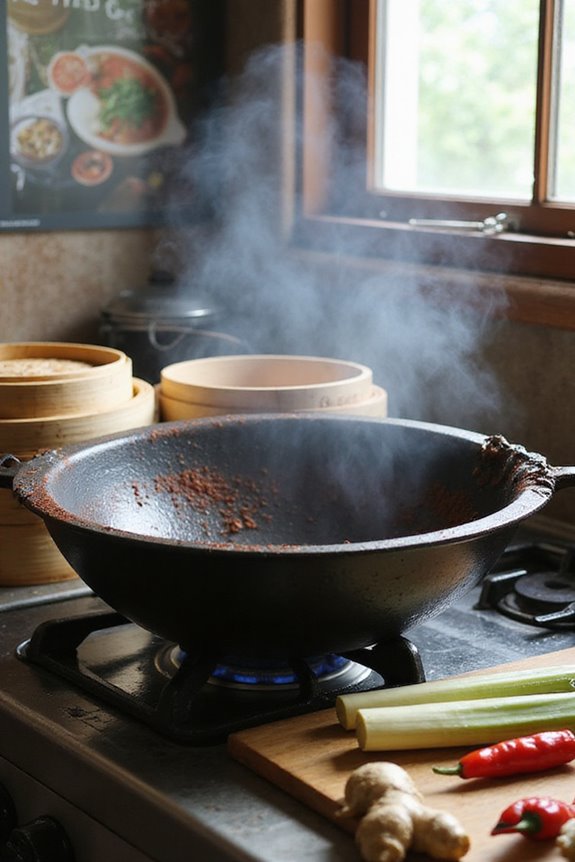
In order to keep our equipment rust-free, it’s essential we consider the sneaky environmental factors at play! High humidity effects can spell trouble for our metal gear. When moisture hangs around, it speeds up rust formation faster than a holiday turkey in a deep fryer!
Coastal corrosion is another culprit; those salty breezes can wreak havoc too. And don’t forget about particulate accumulation! Dust and pollutants can trap moisture, turning our equipment into rust’s best friend.
Temperature fluctuations can also impact our tools. They encourage condensation, boosting that “time of wetness” we want to avoid. Additionally, the use of eco-friendly materials in our equipment can enhance resistance to rust and prolong its life.
For delightful results, we should monitor these environmental challenges. Together, we can prevent rust and keep our tools in tip-top shape!
How Storage Practices Impact Rust Formation

Storing our beloved equipment properly is key to preventing rust, considering that rust is just as unwelcome as a fruitcake at a holiday gathering! A well-organized storage area is essential. Here are some tips for ensuring our tools stay rust-free:
- Choose a Dry Space: Always opt for climate-controlled storage to eliminate moisture.
- Elevate Tools: Keep them off the ground to avoid standing water and humidity.
- Cover Up: Use heavy-duty covers outdoors, creating barriers against rain and dust.
- Stay Organized: Shelving and cabinets keep equipment protected and easy to access. Additionally, proper maintenance practices, such as hand washing and air drying, help prevent moisture-related issues that can contribute to rust.
Importance of Cleaning and Inspection
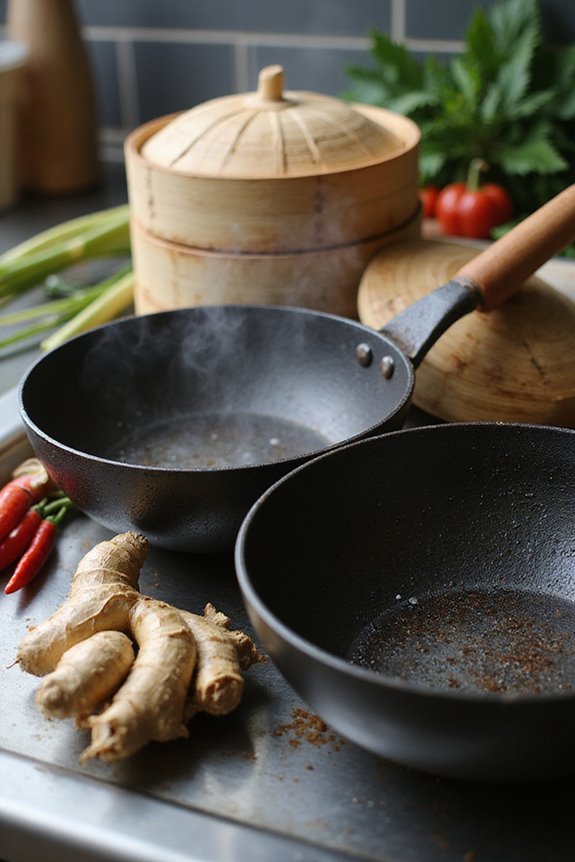
To keep our equipment looking sharp and functioning beautifully, regular cleaning and inspection are absolutely vital. Think of it like preparing a holiday feast—clean utensils guarantee delicious dishes! We should follow consistent cleaning frequency to prevent moisture from lingering on metal surfaces. This means using non-abrasive tools and drying everything thoroughly afterwards.
Let’s embrace inspection schedules! By checking for signs of rust, like pitting or rough textures, we can catch issues early. Target those tricky joints and crevices where dirt likes to hide. Remember, a little TLC goes a long way in extending equipment life. So, grab your soft cloths and let’s keep our gear in prime condition, making every use a delightful experience! Utilizing high-quality materials, such as stainless steel utensils, contributes significantly to rust resistance and durability.
Protective Coatings to Combat Rust

After ensuring our equipment is spotless and well-inspected, the next step in our rust-fighting mission involves applying protective coatings. These delightful layers are essential for effective rust prevention! Here’s why we love them:
- Direct Bonding: Rust-inhibitive coatings stick like glue, blocking moisture effortlessly.
- Versatile Formulas: We have options: water-based, oil-based, and more suitable for any environment!
- Durability: With at least two coats, we create a magical barrier against scratches and chipping.
- Easy Application: Whether we spray, dip, or flow coat, it fits our process.
- Eco-Friendly: Many coatings are VOC-free, keeping our workspace safe and clean. Additionally, utilizing high-quality materials can enhance durability and protect against rust.
Maintenance and Lubrication Strategies
When we think about keeping our equipment in tip-top shape, maintenance and lubrication strategies become our best friends! To avoid that pesky rust, let’s not skip these essential steps:
- Regular Cleaning: We should wipe down surfaces, especially those hard-to-reach joints. Think of it as spring cleaning for our tools!
- Smart Lubrication Techniques: Using quality lubricants creates a magical barrier against moisture. Apply them frequently, especially in harsher climates, to keep moving parts happy! Additionally, consider using eco-friendly materials to contribute to sustainability while maintaining your equipment.
- Stay on Schedule: Let’s establish maintenance schedules—think of it as marking our calendars for a yearly holiday feast. It helps us catch rust early and costs less in the long run.
Effective Rust Removal Techniques
Effective rust removal techniques come to the rescue when our beloved equipment starts showing signs of wear and tear. Let’s explore some delightful options:
- Chemical treatments like Evapo-Rust are non-toxic, making them safe even for our favorite plastics! Just soak those rusted parts and watch the magic happen.
- For a more hands-on approach, mechanical methods with wire brushes or power tools let us scrub away the grime, but let’s remember to be gentle!
- If we’re feeling adventurous, abrasive blasting can clear heavy rust like confetti at a party!
- Finally, ultrasonic cleaning provides a thorough clean without scratches, perfect for our delicate items.
With these methods, rust won’t stand a chance against our equipment!
Safety Measures When Dealing With Rust
Safety measures are a must when we tackle the pesky issue of rust on our beloved equipment! Let’s gear up with proper PPE guidelines to keep ourselves safe. We should always wear safety glasses, chemical-resistant gloves, and masks. It’s like putting on our superhero costumes before a big mission!
Next, workspace organization is key. A clutter-free area not only boosts our efficiency but also avoids accidents. Good lighting and ventilation make our rust removal adventure smooth and enjoyable.
And remember, folks, make sure we have easy access to first aid and fire extinguishers—safety never takes a holiday! With these precautions in place, we can confidently battle rust and give our equipment the love it deserves. Let’s keep shining bright!
Frequently Asked Questions
Can Rust Affect the Resale Value of My Equipment?
Absolutely, rust can greatly impact the resale value of our equipment. By prioritizing equipment maintenance, we not only enhance its appearance but also reassure potential buyers, ultimately maximizing our investment and minimizing those unfortunate losses.
How Can I Prevent Rust in Winter?
As winter whispers its chilly secrets, let’s embrace some preventative measures. Storing our equipment in dry, snug corners helps shield it from moisture, ensuring we face the frosty season rust-free, together. We’ve got this!
Does Rust Impact Equipment Warranties?
We’ve got to remember that rust can definitely impact warranty coverage. If rust repair’s needed, it’s crucial we follow guidelines to guarantee our claims are valid and not voided by modifications or improper maintenance.
What Are the Signs of Severe Rust Damage?
Like a tree losing its bark, we must recognize signs of severe rust damage: flakes, cracks, and discoloration. By identifying rust types early and applying rust prevention methods, we can protect our equipment together.
Are Certain Metals More Resistant to Rusting?
It is understood that certain metals and their alloys offer excellent corrosion resistance. Materials like stainless steel and titanium are great examples, showcasing durability that suits various environments, helping us all feel secure in our equipment choices.

